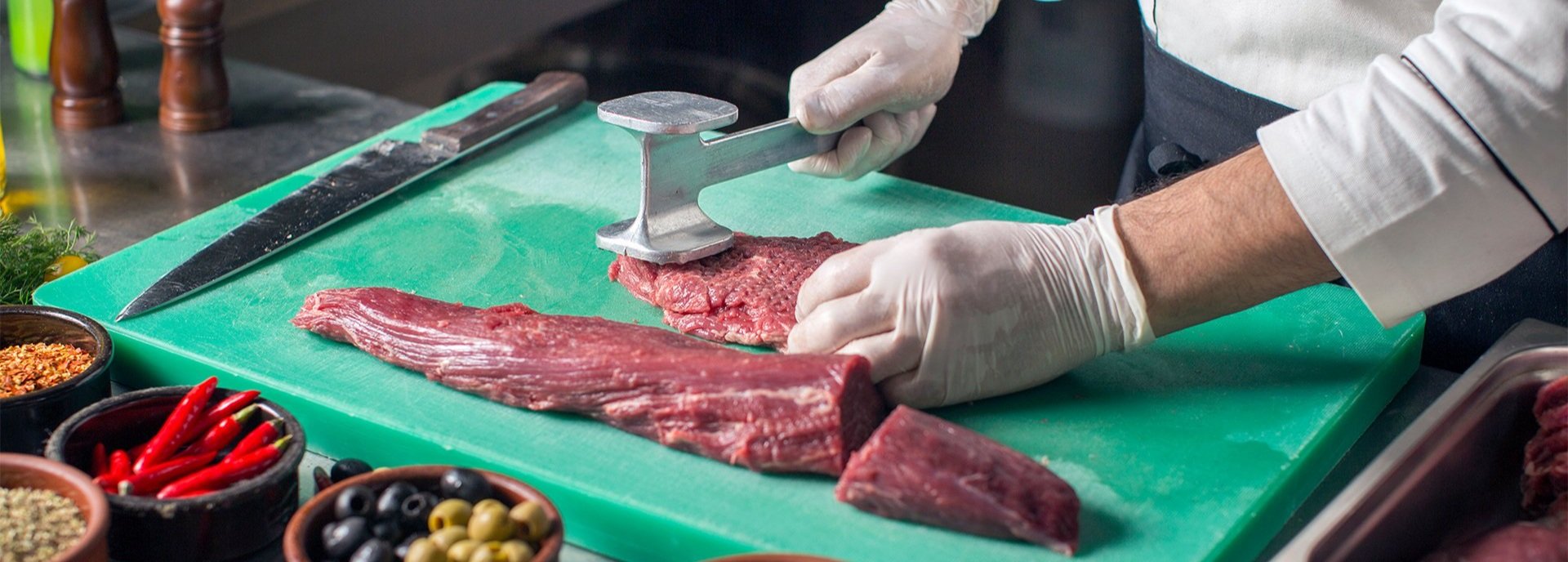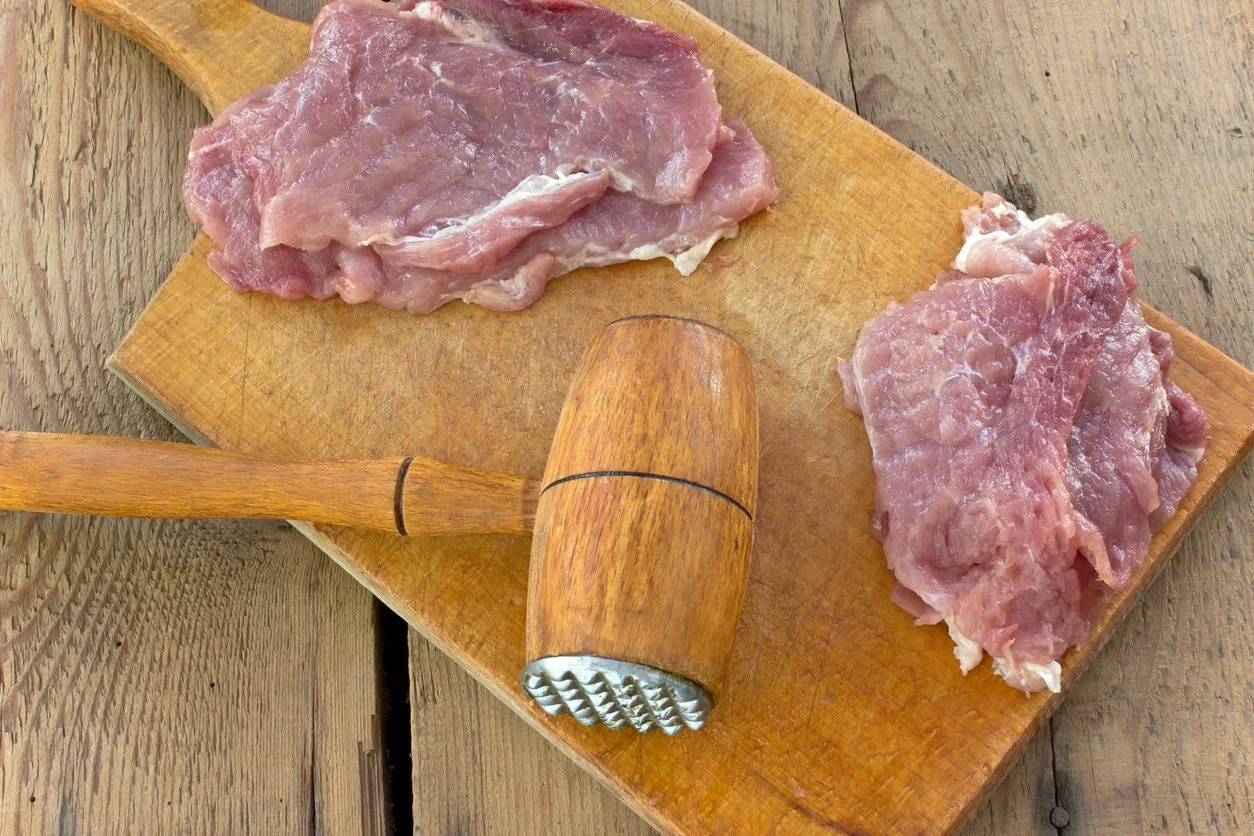The Best Way to Tenderize Meat
Discover > Texas Home Cooking > The Best Way to Tenderize Meat
Due to the time spent by cattle on pastureland, Texas grass-fed beef is naturally leaner, with its lower fat content ofttimes being highly noticeable. And when it comes to enjoying a nice piece of grass-fed steak, one thing’s for sure –– you should never need to struggle chewing through a tough cut. Knowing how to tenderize meats is an essential cooking technique that should be applied frequently if you enjoy tucking into a juicy steak as much as I do.
There are a few ways to tenderize meat, from the tried and true technique of braising to more disputed methods such as marinating. Today we’ll talk about the most traditional, and in my opinion useful, method –– using a meat mallet.
So, how to tenderize meat with a mallet? First, let’s talk about the various types of mallets you can use as a meat tenderizer. Then, you’ll learn how to use this meat tenderizer tool so you won’t struggle chewing.
Different Types of Mallets
Meat mallets come in a wide range of sizes, materials, weights, and styles. The most telling factor is almost always the material, as it essentially dictates every other aspect of the mallet, from style to weight to, most importantly, advantages and disadvantages.
Wood
Wood is not my favorite for two reasons. Firstly, it’s lightweight, meaning you’ll have to put in a lot more effort when slamming a cut of meat. And secondly, it’s hard to keep things hygienic; you wouldn’t use a wooden chopping board for cutting raw meat, for example. Wood can retain fluids such as myoglobin, which can harbor a whole host of bacteria.
Cast iron
Cast iron is heavy, exceptionally durable, and rather stylish. However, water is its worst enemy and that’s not ideal in any kitchen. That alone, however, is not enough of a deterrent (at least not for me), and I’d actually recommend using a cast iron mallet to anyone who’s passionate about preparing meat.
Stainless steel
Stainless steel is the healthy middle ground. It’s lightweight, like wood, but much easier to clean, though slightly more expensive. It’s not as heavy or durable as cast iron, but it's much cheaper and also resistant to rust.
How to Tenderize Meat without this Meat Tenderizer Tool?
If you don't have a meat mallet, you can use other household items. A rolling pin, for instance, works just as well. Or you can use the flat bottom of a saucepan. The pan's handle actually makes the job a lot easier.
A can of tomatoes can also help flatten the meat. Or a tortilla press. This tool is no longer a unitasker. But using this tool will only work best with smaller cuts of meat.
Which Meats Need to be Tenderized?
There’s only one thing you need to think about when asking yourself this question, and that is how much work did this muscle do?
Legs are the part of the animal that have done the most work. Therefore any cuts from here usually need to be tenderized one way or another. However, remember to be practical. In other words, don’t start hammering away at a five-pound venison (What wine goes well with venison?) haunch.
Big cuts are much better adapted for slow cooking methods. Nevertheless, there are a lot of different cuts taken from the leg of the animal that are much better suited to a good beating, such as leg steaks.
Of course, tenderizing isn’t only limited to these cuts. Chicken breast, though made up of muscle that doesn’t usually get worked, can also benefit from a bit of malleting. Be careful of which cuts you beat in front of a crowd though. You might end up caught between a rock and a hard place if you’re caught taking a hammer to a quality steak in Texas!
How to Tenderize Meats with a Mallet?
Aside from a quality piece of meat, you need three things to tenderize your cut: a mallet, some plastic wrap, and a wooden chopping board. This advice may seem a tad counterintuitive, as I told you earlier that using a wooden chopping board can potentially be unhygienic. However, here cling film is used to minimize contamination, so you and your meat will be completely safe. Wood absorbs shock and vibration phenomenally well, meaning two things — the process will be a lot quieter and way smoother.
First, cut a sheet of cling film that's at least twice the length of the chopping board. Place it on the board, lay your piece of meat on it, and fold one end of the film over the other to seal the cut. Once the meat is sandwiched between the two layers of plastic, start to beat it.
Aim to even out the meat, not completely flatten in. The last thing you want to do is rip a hole into your schnitzel. You may need to do it a few times to get the hang of it, but it’s usually fairly easy to work out when you’ve gone too hard!
If you’re eating meat in the best way possible, you’ll often find yourself coming across some tough and “less desirable” cuts. But that’s no problem for the trusty mallet and its tenderizing powers! It’s an easy process you can get near-perfect after only a few tries.
Looking for some amazing hand-cut meats? Check out a local craft butcher near you today!
Discover the ultimate farm-to-table experience at these six Dallas butcher shops. Indulge in a diverse selection of healthy, hormone-free and antibiotic-free fresh meats.



